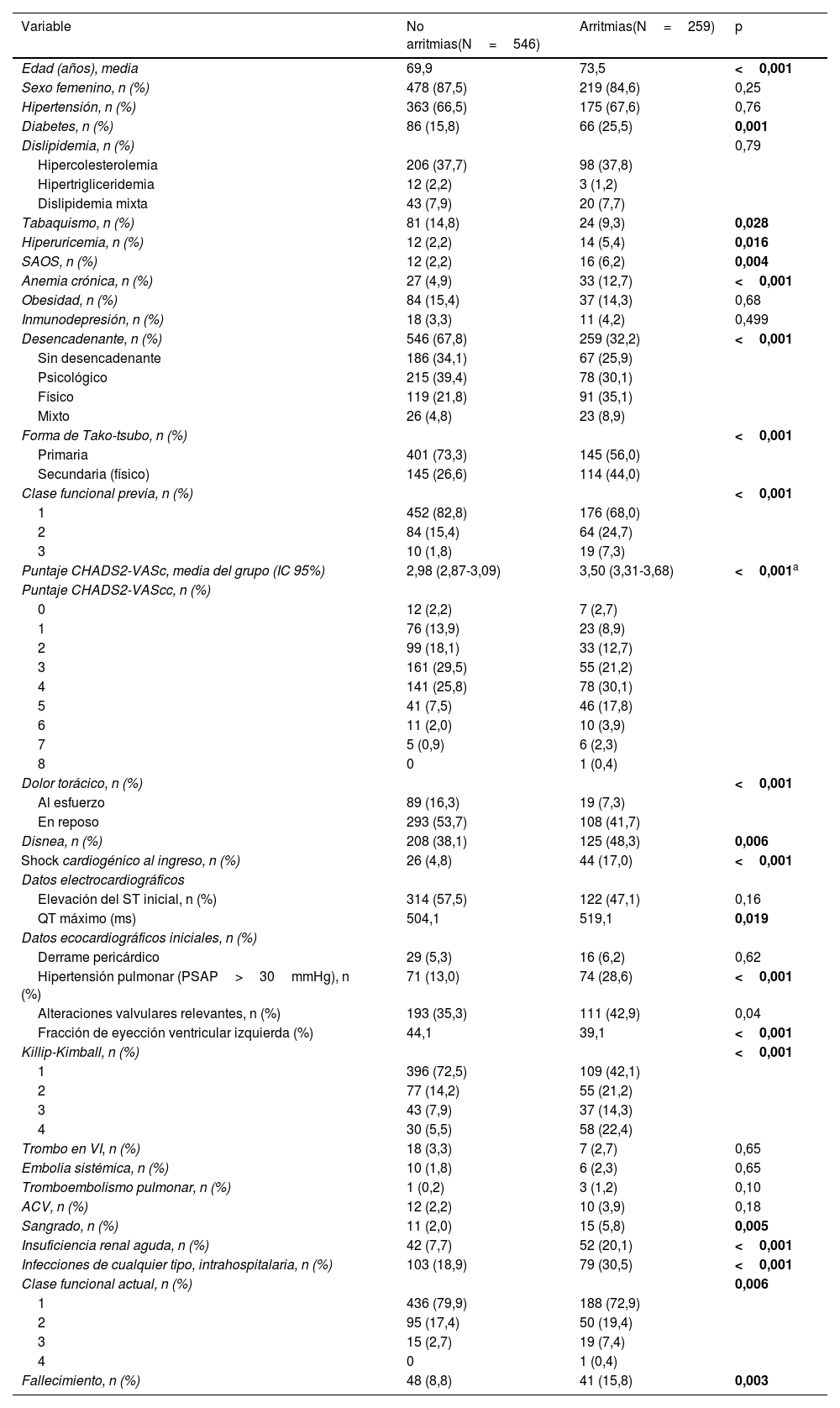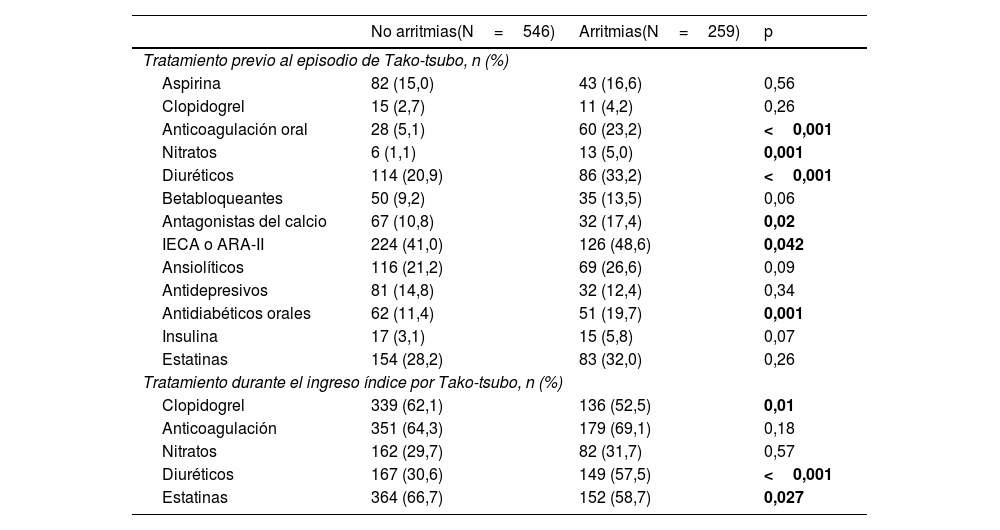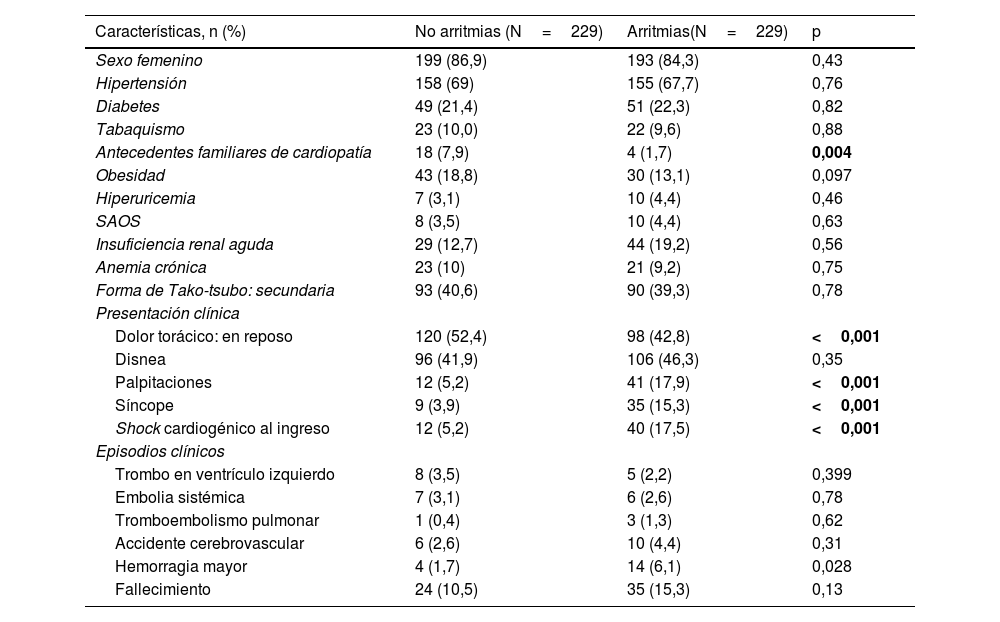El presente estudio pretende evaluar la incidencia, el pronóstico y el tratamiento de los trastornos del ritmo (TdR) en el síndrome de Tako-tsubo (STT).
AntecedentesEl STT se asocia frecuentemente a TdR. El valor pronóstico de estos TdR aún no está bien caracterizado en el STT.
Material y métodosSe analizaron los TdR de los pacientes incluidos en el REgistro nacional multicéntrico sobre síndrome de Tako-tsubo, ingresados entre 2002 y 2018, aportados por 38 hospitales de todo el país. Analizamos en los pacientes TdR previos, en el ingreso y en el seguimiento a largo plazo.
ResultadosSe describió cualquier tipo de TdR en 259 (23,5%) casos, de una cohorte de 1.097 pacientes consecutivos con STT. Los TdR se presentan más en pacientes con diabetes mellitus, tabaquismo, hiperuricemia, apnea del sueño y anemia, además de con una fracción de eyección del ventrículo izquierdo (FEVI) menor al ingreso. El TdR más frecuente fue el inicio de fibrilación auricular. Durante el ingreso hospitalario, los pacientes con TdR mostraron más complicaciones, como shock al ingreso, hemorragia mayor, insuficiencia renal aguda y el combinado de infecciones. En el seguimiento, presentaron mayor mortalidad y numéricamente más episodios adversos combinados.
ConclusionesLos TdR no son infrecuentes en fase aguda del STT. El STT asociado a TdR se presenta con más complicaciones y peor pronóstico tanto hospitalario como a largo plazo.
This study sought to evaluate the incidence, prognosis and treatment of heart rhythm disorders (HRD) in Tako-tsubo syndrome (TTS).
BackgroundTTS is associated with HRD. The HRD prognostic value is not well characterized in TTS yet.
MethodsThe HRD of patients included in the National Registry of Tako-tsubo syndrome, admitted between 2002 and 2018 and coming from 38 hospitals throughout the country, was analyzed. We analyzed any heart rhythm disorder in patients presented before admission, at admission and in long-term follow-up.
ResultsAll types of HRD were described in 259 (23.5%) cases, from a cohort of 1,097 consecutive patients with TTS. HRD was more associated with diabetes mellitus, smoking, hyperuricemia, sleep apnea, anemia with a worse LVEF on admission. The most frequent HRD was a new onset of atrial fibrillation. During hospitalization, patients with HRD showed more complications such as shock on admission, major bleeding, acute renal failure, and combined infections. At follow-up, they presented higher mortality and more major adverse cardiac events, but with a non-significant correlation.
ConclusionsThe incidence of HRD in patients with TTS is not infrequent. TTS, when associated with HRD, presents more complications and a worse prognosis both in hospital and in the long term.












